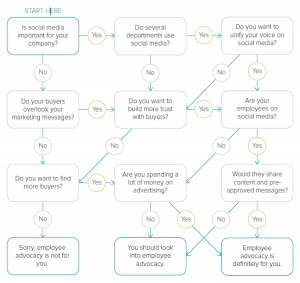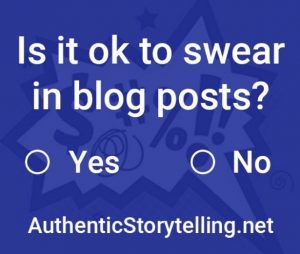Data visualization allows us to present sets of data by using visual elements. Probably, you have already seen several charts and graphs, which are examples of this strategy, in board meetings or over the internet. But have you ever thought about the benefits of data visualization?
We can use this strategy to express a wide variety of information and make it easier for our audience to understand, no matter how complex the topic is. However, data visualization is way more than that.
In this article, you will learn what else makes data visualization so useful and why you should start investing in it right away.
In the topics below, you will find out the following six benefits of data visualization:
- Easy to convey information
- Easy to understand
- Helpful to process huge sets of data
- Simple decision-making process
- Useful for identifying trends
- Useful to encourage engagement
6 benefits of data visualization
1. Easy to convey information
We already mentioned one of the most relevant benefits of data visualization, which is to facilitate how information is convoyed, but let us explain it.
Data visualization allows you to explore data that would otherwise be just a collection of tables, numbers and words. It is a way to make it more compelling and optimize the viewer’s experience.
Would you rather read a lengthy article ranking countries on a variety of health, education and economic factors, or look at this interactive visualization on the topic?

Besides that, visualizations are incredibly flexible. You can use them to present information about almost every discipline, ranging from sports and science to politics and social media, because it clarifies things that are unclear.
Take a look at the representation of the Mandelbrot set, which is a complex mathematical concept.

In addition, data visualization is mostly a universal language, which is a very relevant characteristic considering that sometimes it is necessary to reach out to people that speak other languages. Imagine how hard it would be to explain the insights of a financial report to a foreign stakeholder without the aid of visuals?
Data visualizations (and infographics) go beyond words and yet are as intuitive as speaking in one’s mother tongue. Therefore, it allows us to show something that will be correctly understood regardless of the language our audience and ourselves speak.
Whether you speak English, Spanish or Urdu, you will understand this visualization of a galloping horse just the same.

2. Easy to understand
Some studies have shown that texts with illustrations are easier to understand. Hence, data visualization also makes that, because it uses visual elements to complement numbers and tables.
By doing that, it illustrates the relationship between two or more elements and presents several points of one particular aspect, for instance.
Before a complex set of data, the visualization grants a broad and full view of a specific topic and also allows you to explore each of its points. Consequently, you will comprehend them easier and better by noting how they are connected to each other and how deep are those relationships.
This interactive visualization of the relationships between high-rank executives and board members in corporate America is a good example.

3. Helpful to process huge sets of data
We can also say that data visualization works as a data literacy tool. That is, it helps you to read and analyze data, including big data. So, you can easily recognize and compare patterns and relationships, because they stand out to the eyes.
This resource also makes hidden structures visible. This is possible because, when using data visualization, you can see the bigger picture and then decide on which details to focus on, zooming in and moving through the visuals.
Just look at this interactive visualization of the Article for Deletion discussions in the English Wikipedia.

As a result, it is possible, for example, to gather information about a certain marketing campaign and identify the reasons why your strategy is not bringing the results you were expecting.
4. Simple decision-making process
Another benefit of data visualization is that it allows data-driven decision-making and simplify this process. It is a great resource for companies that have a data culture.
This is possible because decision-makers can easily explore the data and understand it, quickly discovering useful insights. So, you will be able to make projections based on solid up-to-date data without making much effort.
Then, before deciding which actions to take, you can use the information you’ve gathered to improve all stages of your strategies, from planning to executing, monitoring, and controlling. Consequently, the decision-making process is faster and more effective.
5. Useful for identifying trends
As mentioned, data visualization enables viewers to identify patterns and relationships, which allows to discover trends because of the insights provided by this information.
When we see data represented by graphs and other visuals, it is easier to perceive how deeply connected the given parameters are. Besides that, we notice trends faster, which is vital considering that everything is changing fast, and companies must be able to follow and adapt to the changes.
By using data visualization, you can take an action at the right moment to seize opportunities in the market or to prevent negative trends from affecting your enterprise.
Just look at this visualization of the relationship between research publications through their use of citations.

6. Useful to encourage engagement
Data visualization is engaging by nature. When you present information related to the Content Marketing ROI, for example, there are a lot of numbers involved, correct?
Demonstrating the results of your campaigns with a compelling and well-made visualization will enable the board to have a clear view of all the points you stress, which will impact them. You can use certain techniques, such as data storytelling to make this resource even more impactful.
As people understand what you are saying and the data you are using to back your ideas up, they are more likely to have a positive response.
Graphics offer instantaneous gratification. An example is this interactive visualization of the mood of people in photographs from the Guardian’s 24 Hours in Pictures, or any other website you choose to break down… emotionally, that is.

Data visualization is a right-brained thing used in fields once dominated by left-brained people. It lets you detect the expected and discover the unexpected.
Check out this Cardioid:

Considering all these points, it is clear that the benefits of data visualization will transform the way your business handles data, leading to an optimization of processes all across the company.
Now that you are aware of all these benefits of data visualization, feel free to contact us and get a quote for design and video creation!








